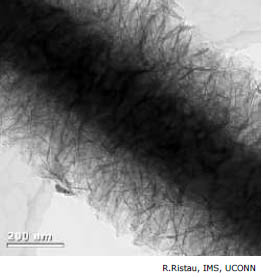
 Product
Technology
Product
Technology
Activated carbon, ion exchange resins, thin film membranes, ultraviolet light, biocidal and iodinated resins and low porosity filters all have significant applications in the water filtration business. But much of the research and product development occurring today is based on the newer applications of nanotechnology. Stated simply, nano size particles can be embedded in filtration media and provide enormous surface areas with reactive (whether adsorptive, destructive or electrokenetic) capacities. This reduces the amount of media required in the finished product, increases the effectiveness of that product, and reduces the cost of goods.
Further advances in nanotechnology have developed elements that can be impregnated in the media structure that target specific contaminants. For example, arsenic is a problem in many rural water supplies in the U.S. It is possible to produce a filter media that is specifically designed to target this contaminate so that it is removed from drinking water. The same holds true for other key impurities that may be found in regional water supplies. This means that simple, efficient and inexpensive filters can be tailored to address specific and local problems. With most prior technologies, manufacturers products tended to be a “one size fits all”. Unfortunately, the problems with various types of water contamination vary geographically and are more complex than that.
There are quite a few technical papers readily available on nanotechnology and water filtration. From a simplified perspective, nano particles are much smaller pieces of materials or elements that we are already familiar with. We’ve learned how to make particles smaller, build and manipulate them. We can study and evaluate these particles with electron microscopes. What makes these particles unique is that by decreasing the size of the particle, the surface area exposed on each particle increases in proportion to the particle size. For example, consider the surface area of a baseball. Now pretend the baseball is hollow and we can fill it with BB's. The amount of space required by the baseball has not changed, but if we calculated the surface area of all the BB's we could fit inside of a baseball, it would be many times the surface area of the baseball. Here are the calculations that demonstrate this example:
A baseball has an average diameter 2.90", so the radius equals 1.45". The surface area of a baseball is:
A = 4p(1.45)^2 = 26.4 square inches
A common BB has a diameter of 0.172" so the radius is 0.086". The surface area of a BB is:
A = 4p(0.086)^2 = 0.0929square inches
It would take approximately 4810 BB's to fill a "hollow baseball". The
total surface area of those BB's would be approximately 447 square
inches compared to the baseballs surface area of approximately 26
square inches, or almost 17 times the surface area. This example simply
shows how smaller nano particles offer more reactive surface area than
larger size particles of the same composition, occupying the same space.Volume baseball = 4/3 p (r)^3 = 4/3 p (1.45 in)^3 = 12.8 in^3
Volume BB = 4/3 p (0.0860 in)^3 = 0.00266 in^3
Number of BB's in baseball = 12.8/0.00266 = 4810 BB's
Area of a baseball full of BB's = 4810 BB's*(4 p (0.0860 in)^2 per BB = 447 in^2
The BB's have 447/26.4 = 16.9 times more surface area than the baseball.
The active or exposed surface area of a filtration media and the composition of the media are critical components that determine what a filter can remove and for how long it can continue to function. There is research being conducted on various types of nanoparticles that can trap (adsorb) certain impurities, destroy certain impurities (or change the molecular structure), or take them out of the water electrokenetically (like the bond of a very strong magnet against steel). Besides increasing the efficiency and lowering the cost of water filters, this application of new technology also minimizes some of the common disadvantages of earlier water filters.
Historically, filters took time to process water. With some of today’s leading water filter brands, a lot of time. In-Tec’s nano based filters do not require the time, pressure or patience that older technologies required. Water can be efficiently filtered in portable devices that provide drinking water at the same rate typically required by an adult, an average of 10 ml per second (or what one would consider a “swallow”).
The following are some of the advantages of water filtration media’s that incorporate state of the art nano-technology that In-Tec is currently using:
• Broad capacity for the removal of chemical contaminants and heavy metals
• Extraordinary removal capabilities on bacteria, viruses and protozoa and endotoxins
• Filtration media can be tailored to remove specific contaminants
• High capacity for the removal of suspended solids / turbidity
• High capacity for retention of filtered impurities
• Low pressure drop across the surface of the media
• Light weight and small size
• Storable and reusable
